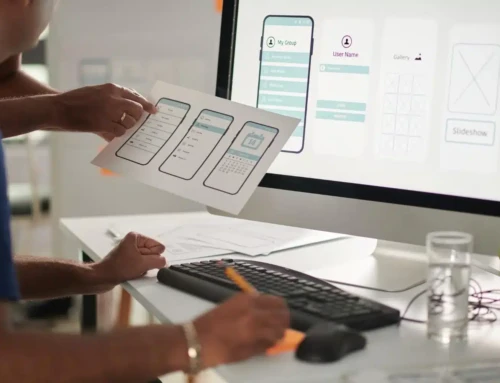Technology is now at the center of every organization because of digitalization. As a result, software development has evolved into a mission-critical activity. It is critical for a business to ensure the rapid creation and continued quality of software to survive and prosper.
Software development is currently a well-established industry. Open source became popular in the 1990s, and Amazon’s cloud services debuted in 2006. Companies can now undertake daring software initiatives faster and for less money because of the emergence of such tools and methodologies, and the rate of change is not slowing it down. Recognizing these tendencies and utilizing them is essential for technology leadership in the future.
In this article, we will focus on four key themes that will influence technology strategy in 2022, as well as what they signify for the future of software development. Let us get this party started.
The first trend is serverless computing.
Serverless computing is making waves once again! And why should that surprise anyone? Since Amazon released its Lambda service in 2014, people have been discussing how serverless computing is altering computing.
So, since serverless is not utterly new, why is it back on our list? It is because companies are beginning to do things properly. Serverless computing, like cloud computing in general, has seen widespread adoption, although in inefficient ways. The current trend is to go back to basics, doubling down on its advantages while avoiding its flaws.
What is the best way to execute this trend correctly?
To begin, serverless computing is a type of cloud computing that is not truly “serverless,” but entails outsourcing the administration of those servers. Check out our essay on the Future of Serverless Computing for additional information.
Serverless allows developers to focus on creating code rather than infrastructure management. It allows developers to spend more time on front-end, business logic, and application functionality innovation and optimization. Developers do not have to define the infrastructure needed to integrate, test, distribute, and deploy code-builds into production, which streamlines DevOps cycles.
Using serverless for the right reasons and with the right applications is the key to getting it right. One of the most appealing aspects of serverless computing is that you just pay for execution. The meter begins when a request is made and ends when the request is completed. Serverless computing is extremely practical, faster, and frequently more cost-effective than other forms of computing for specific applications, such as those requiring rapid scaling. However, because serverless is pay-as-you-go, applications must be spun up every time they are used, which can pose delay difficulties for high-performance programs and cost issues for apps that make a lot of data queries.
What to stay away from
While Amazon’s AWS Lambda, Microsoft’s Azure Functions, and Google’s Cloud Functions are the market leaders, some smaller companies have made inroads. Do not pick a platform until you have decided what you are going to build. Each platform has evolved in response to the platform operator’s offers, and as a result, they are naturally better at some things than others. If you use Google APIs and products, for example, it makes sense to host with Google because the ecosystem should be straightforward to use.
Fundamentally, an application should only be introduced to a serverless environment if it plays to its strengths. Always-on apps can increase expenses, high-performance applications can suffer from latency, and monolithic programs will not benefit from the modularity that serverless provides.
What should you do first?
Avoid massive bangs by working iteratively. Serverless is not the end-all solution. It is not necessary to replace your entire estate with it. Choose which aspects of your system might benefit from being serverless and optimize the rest of your system in other ways, whether in the cloud or not.
Finally, make a commitment to tracking and measuring your progress. It is more difficult to monitor serverless workloads than it is to monitor the existence of a process on a server. It is, however, typically more informative. Instead of just checking whether a process is in memory, you end up monitoring the actual functions being done.
Microservices are the second trend.
This is an old trend that has returned to our list because people have finally started to execute it correctly. Again, this is about leveraging microservices’ capabilities rather than seeking widespread adoption if the use case is poor or even incorrect. This trend may lead to a reversal of microservice adoption in areas where it is not working. Overall, however, we expect microservices to become more popular as the underlying software architecture and development team structures become more aligned with how microservices work.
What is the best way to execute this trend correctly?
Simply said, a microservice is a precisely scoped, robustly encapsulated, loosely linked, independently deployable, and independently scalable application component. They enable teams to offer a single piece of functionality without having to deal with the time-consuming update and testing processes that might bog down a huge monolithic application.
Microservices function successfully when you understand the roles of the numerous services that your system requires. This method reduces development delays, coding issues, and service interdependencies while also allowing for rapid growth. As a result, be sure the microservices you are creating require regular updates or revisions, otherwise they will be a waste of time to begin with.
What to stay away from
Microservices must be self-contained to get architectural benefits. To ensure that the microservices are self-contained, developers must embrace new patterns and adhere to several architectural constraints. Only if you are constructing new functionality or the component of the monolith you are replacing is not a mass of interdependencies can you take a piecemeal approach to microservices.
It is all too easy to use microservices incorrectly in the wrong context, just as it is serverless. Building microservices on top of a monolithic database is a bad idea. Microservices require a data store of their own. Microservices can provide real-world benefits, but success is often elusive because businesses are not clear on why, when, and how they should be employed.
What should you do first?
Microservices can be written in a variety of programming languages and run on a variety of platforms. The way microservices communicate with one another and the protocols they utilize are the most important technological decisions.
Changes in team structures, distributed computing skills, and mature DevOps and agile techniques are also required for success. As a result, a potentially momentous change management project may be required before you can get started.
When developing microservices, you should always start with the data and work your way up through your application. Determine the most important points of conflict and proceed from there. Use the 80/20 rule: for example, shifting 20% of your application(s) into microservices will offer 80% of the benefit.
The impact of data science and AI/ML on decision-making is the third trend.
Finally, we’re entering uncharted ground. Although AI and machine learning have been discussed for a long time, it is only now that these capabilities are within reach of a wide spectrum of enterprises. On-demand and adaptable AI-based software such as Google’s TensorFlow, IBM’s Watson, and Infosys’ Nia are driving this.
What is the best way to execute this trend correctly?
This trend is primarily about increasing decision-making, planning, and strategy, rather than end-user skills. Developers can use AI/ML algorithms to uncover hidden value in under-utilized or non-utilized data, spot trends, and then make decisions to achieve certain goals. Here are a few examples:
Product strategy: An in-depth examination of how products are currently used to determine the most effective ways to evolve.
Process improvements: Improve project timeframes, cost estimates, and prioritization by better understanding how processes work today.
Pattern detection is used for in-depth analysis, identification, and categorization of error types in automated testing and debugging.
Smart assistants: These technologies help with development by speeding up routine tasks and boosting quality control. Kite is a fantastic example.
Fundamentally, the use of AI in software development promotes engineers to write, test, and deploy code to production teams in a more agile manner.
What to stay away from
Underfunding has the potential to be fatal. The cost of acquiring and labeling data is often underestimated by enterprises. They are then confronted with the challenge of obtaining meaningful results in a data-poor setting. Unintended implications of defective models, such as algorithmic bias, must also be considered. It is vital to be careful and specific in your planning, and to provide time for incremental progress.
What should you do first?
You should ideally begin with a pilot project and gather data. This will assist in avoiding the key problems of underfunding, unrealistic expectations, and a lack of data. It is easier to curate the correct data, work on a modest scale to prove value, and build up enough of the system to evaluate its performance and begin iterating if you stay focused on a specific project.
It is also worth noting that machine learning code only makes up a small portion of real-world machine learning systems. Make sure your regular software handles important components like managing data, front-end product interfaces, and security.
Low-code/no-code is the fourth trend.
Low-code/no-code promises to free up development teams to focus on other things. While some have heralded this as a panacea for all custom software issues, we feel the market is still decades away from providing these results. That is not to say that this is not a trend worth learning about and embracing in a limited context.
What is the best way to execute this trend correctly?
First and first, it is critical to recognize that this is not a single trend. Appian and Boomi Flow are two low-code systems. Zapier and IFTTT are two examples of orchestration tools. Both are useful, but neither is a true substitute for experienced developers and technicians.
For minimal adjustments and easy automation, consider implementing low-code projects. These can alter workflows and allow non-developers to change how they interact with technology. Professional IT and business subject-matter experts can instantly design digital solutions using low-code application platforms (LCAPs). However, this must be done in conjunction with more complex programs created using more traditional approaches.
What to stay away from
Be wary of hype and do not believe that low-code/no-code can solve all your development problems. In fact, according to Gartner, “no-code” does not exist and is simply low-code marketed by marketers. 1
Essentially, do not confuse “simpler” with “better,” and just because something is straightforward does not mean you should accept it or that it will be straightforward to implement. You should continue to increase your engineers’ knowledge rather than trying to convert to a less competent foundation, particularly unless you already have technicians who have worked on a more “complicated” solution.
Furthermore, do not overestimate the capabilities of low-code/no-code applications; you will certainly be disappointed. Low-code/no-code cannot replace traditional programming’s flexibility, customizability, and utility. Adapt your business to match the tool, not the other way around.
What should you do first?
Low-code/no-code should be viewed as part of a larger movement toward making programming more approachable. This aligns with increasingly basic programming languages such as JavaScript and Python, as well as other more current languages (e.g., Rust, Go, Kotlin) that leverage type deductions and null safety, among other features.
However, just because something is simple does not mean it should be followed. Consider your specifications, as well as the individuals you have now and the people you plan to hire in the future. After that, make sure it is in line with your market development strategy.
Finally, having visibility into low-code/no-code projects within the company is critical. You can guarantee that business-generated low-code apps are documented, recognized, maintained, and managed by creating a hub for them. The challenge of scalability is always present.
Remember Seattle Software Developers for all of your software development needs!





